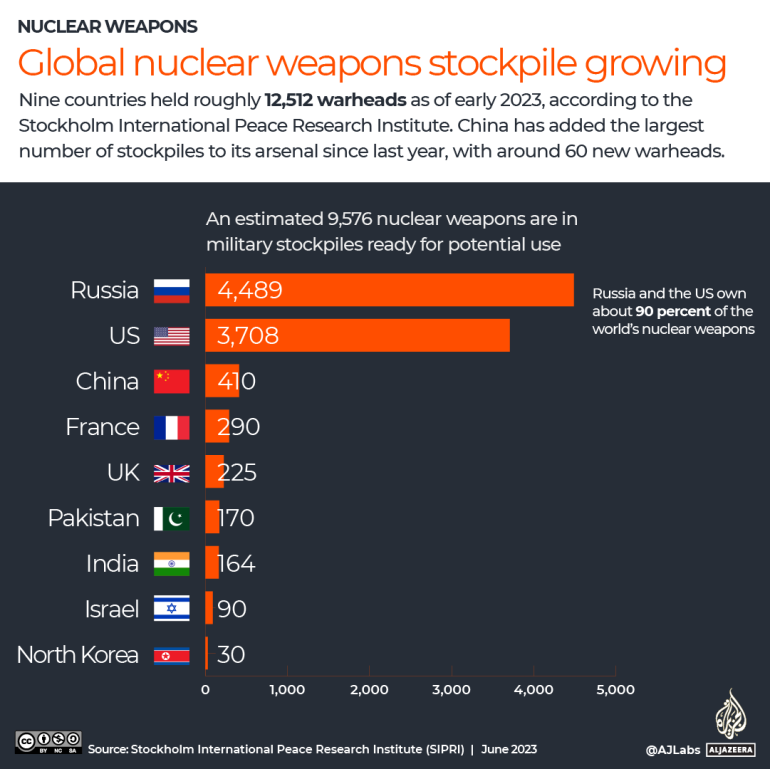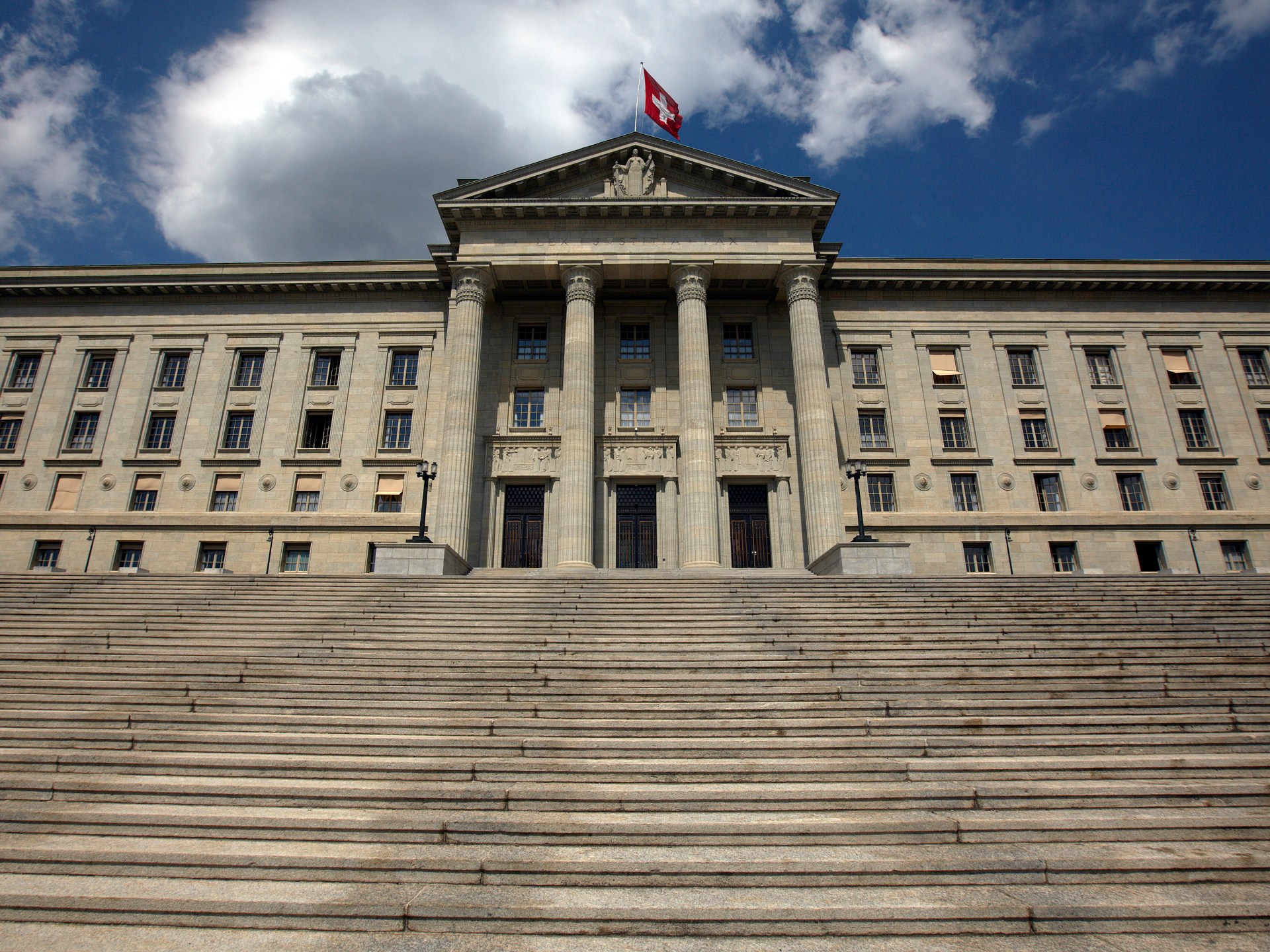China, other states, fortify nuclear weapons arsenals: Report
The world’s nine nuclear-armed states are continuing to modernise their nuclear arsenals, with China’s stockpile of nuclear warheads rising by 17 percent in 2022, according to the Sweden-based Stockholm International Peace Research Institute (SIPRI).
In the SIPRI Yearbook 2023 released on Monday, the think tank said it estimated China’s nuclear arsenal had increased from 350 warheads in January 2022 to 410 in January 2023, and that it was “expected to keep growing”.
Depending on how China decided to structure its forces, the report added, China could potentially have at least as many intercontinental ballistic missiles (ICBMs) as either the United States or Russia by 2030, it added.
“China has started a significant expansion of its nuclear arsenal,” Hans M Kristensen, associate senior fellow with SIPRI’s weapons of mass destruction programme and director of the nuclear information project at the Federation of American Scientists (FAS) said in a statement.
“It is increasingly difficult to square this trend with China’s declared aim of having only the minimum nuclear forces needed to maintain its national security.”
The People’s Liberation Army (PLA) is the world’s largest fighting force but China is also engaged in an effort to modernise its military equipment and weaponry.
Globally, SIPRI estimated there were 12,512 nuclear warheads in January 2023, with about 9,576 in military stockpiles for potential use—86 more than in January 2022.
Of those, an estimated 3,844 warheads were deployed with missiles and aircraft, and about 2,000—nearly all of them from Russia or the US—maintained in a state of high operational alert, meaning that they were fitted to missiles or held at airbases hosting nuclear bombers.

SIPRI noted that despite China’s increasing nuclear stockpile, the US and Russia together possess almost 90 percent of the world’s nuclear weapons.
And while their arsenals seemed to remain stable in 2022 despite heightened tensions following Russia’s full-scale invasion of Ukraine, SIPRI noted that transparency regarding nuclear forces had declined in both countries as a result of the continuing war.
In February, Russia said it was suspending its participation in the New START Treaty, a key pillar of US-Russian nuclear arms control.
Earlier this month, Washington said it would stop providing Moscow with updates on matters including missile and launcher locations, in what Washington describes as a retaliatory “countermeasure” due to Moscow’s “violations” of the accord. It had already suspended its bilateral strategic stability dialogue with Russia soon after the February 24, 2022 invasion of Ukraine.
Russian President Vladimir Putin, meanwhile, is planning to position tactical nuclear weapons in Belarus as early as July, and had regularly threatened nuclear retaliation since the war in Ukraine started and Western allies, including the US, rallied to help the country defend itself.
“We are drifting into one of the most dangerous periods in human history,” Dan Smith, SIPRI Director said in a statement. “It is imperative that the world’s governments find ways to cooperate in order to calm geopolitical tensions, slow arms races and deal with the worsening consequences of environmental breakdown and rising world hunger.”
Among the world’s other nuclear states, SIPRI noted India and Pakistan also appeared to be expanding their nuclear arsenals, developing new types of nuclear delivery systems.
“While Pakistan remains the main focus of India’s nuclear deterrent, India appears to be placing growing emphasis on longer-range weapons, including those capable of reaching targets across China,” the report said.
North Korea, also made a priority of its nuclear programme in 2022, SIPRI observed.
The think tank estimates Pyongyang, which last tested a nuclear weapon in 2017, has assembled about 30 warheads and has enough fissile material for between 50 and 70 warheads, both significantly higher than the estimates in January 2022.
This January, leader Kim Jong Un called for an “exponential” increase in its nuclear arsenal.
Elsewhere, the SIPRI Yearbook said the United Kingdom’s warhead stockpile was expected to grow after the government announced in 2021 that it was raising its limit from 225 to 260 warheads.
France is also continuing with plans to develop a third-generation nuclear-powered ballistic missile submarine (SSBN) and a new air-launched cruise missile, as well as to refurbish and upgrade existing systems, SIPRI said.
Israel—which does not publicly acknowledge possessing nuclear weapons—is also believed to be modernising its nuclear arsenal.
“Most of the nuclear-armed states are hardening their rhetoric about the importance of nuclear weapons, and some are even issuing explicit or implicit threats about potentially using them,” said Matt Korda, associate researcher with SIPRI’s weapons of mass destruction programme and senior research associate with the FAS Nuclear Information Project. “This elevated nuclear competition has dramatically increased the risk that nuclear weapons might be used in anger for the first time since World War II.”
The Yearbook is SIPRI’s annual assessment of the state of armaments, disarmament and security around the world.




